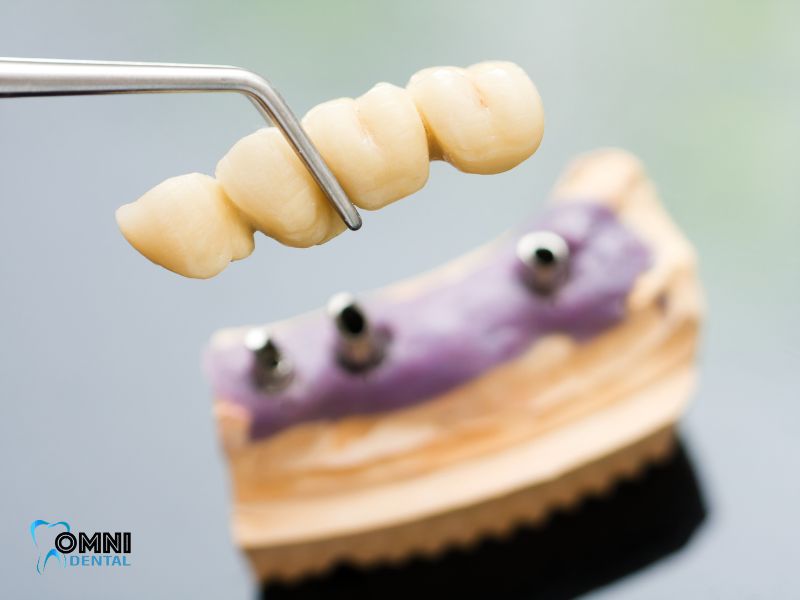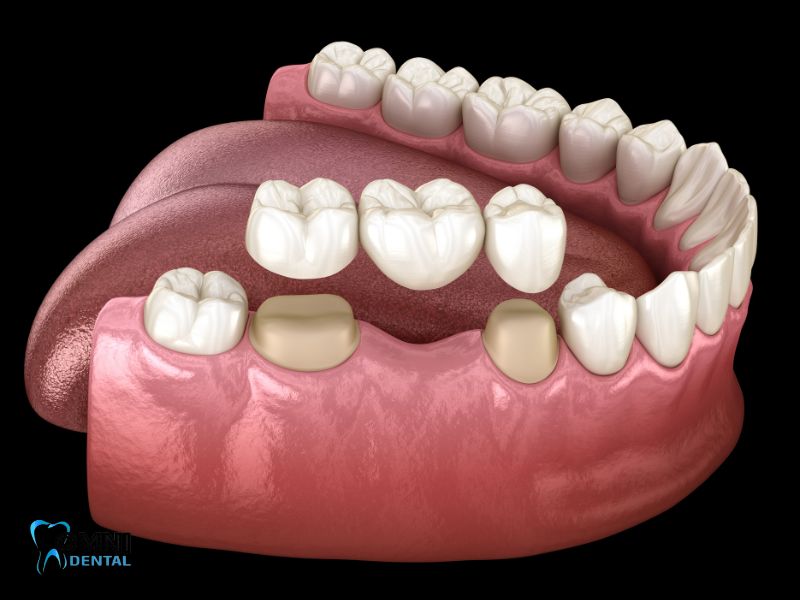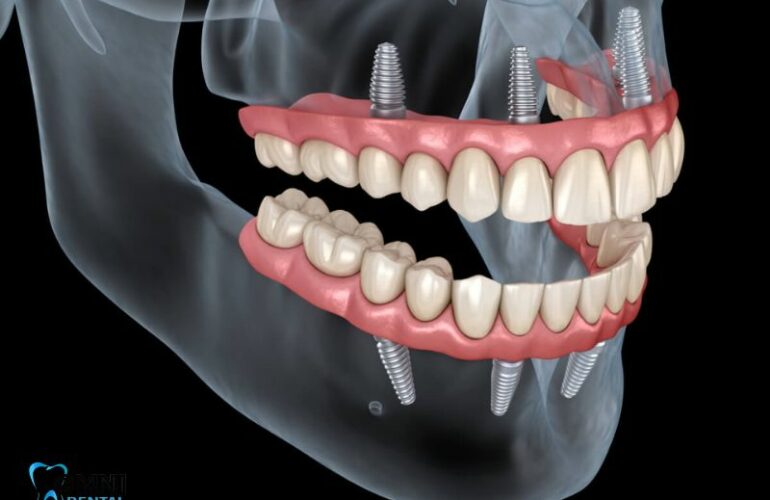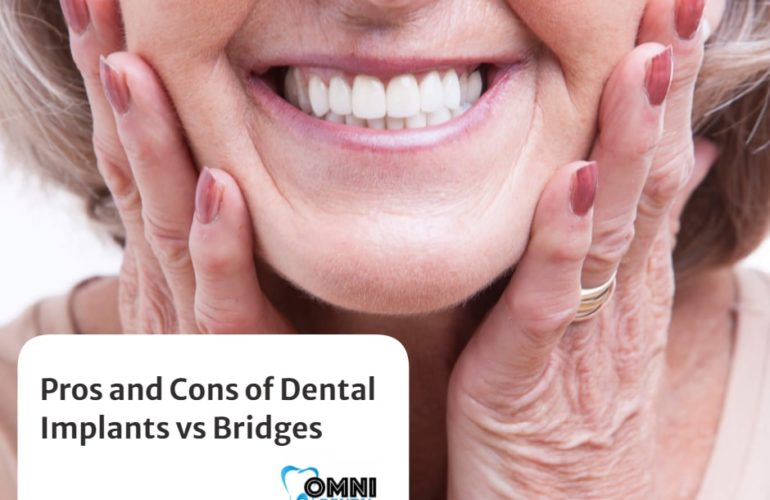Understanding Dental Bridges
Dental bridges have long been a trusted solution in dentistry, especially for those looking to restore their smile after losing a tooth. Serving the NW Chicago suburbs, Omni Dental often receives questions about dental bridges from our Arlington Heights patients.
1. What Exactly Is a Dental Bridge?
Types of Bridges
A dental bridge is a set of dental crowns to replace missing teeth. There are several types of dental bridges:
- Traditional Bridges: Supported by natural teeth on either side of the gap.
- Cantilever Bridges: Used when only one natural tooth is next to the gap.
- Maryland Bonded Bridges: Made of porcelain or metal and anchored to existing teeth with wings.
- Implant-Supported Bridges: Use dental implants for support instead of natural teeth.
Purpose of Dental Bridges
Dental bridges serve several key roles:
- A dental bridge replaces missing teeth: A gap can affect your health and diet.
- Restore function: Helps in chewing and speaking without difficulty.
- Prevent complications: Stops remaining teeth from shifting positions.
2. How Long Do Dental Bridges Last?
Factors Influencing Longevity
The lifespan of a dental bridge largely depends on the type and care given:
- Materials: Porcelain and metal bridges often last up to 15 years.
- Oral Hygiene: Regular brushing and flossing can extend the bridge’s life.
- Regular Check-ups: Helps in identifying issues like tooth decay early on.
Tips for Maximizing Bridge Lifespan
- Maintain consistent oral hygiene routines.
- Schedule an appointment for regular dental check-ups.
- Avoid hard foods that can damage the bridge.
3. How Are Dental Bridges Different from Dental Implants?
Key Differences in Procedure
While both dental bridges and dental implants replace missing teeth, they differ in procedure:
- Dental bridges: Involve creating a bridge between two existing teeth or implants.
- Dental implants: A titanium post is placed in the jawbone to support a crown.
Cost, Durability, and Aesthetic Comparisons
- Cost: Dental implants might be pricier initially but often have longer lifespans.
- Durability: Implants support structures from the jaw, making them sturdier.
- Aesthetics: Both options aim to match natural teeth, ensuring a seamless appearance.

4. Are Dental Bridges Noticeable?
Design and Aesthetics of Modern Bridges
Modern dental technology ensures that bridges resemble natural teeth. The dental crowns used in the bridge are crafted to match adjacent teeth’ color, size, and shape.
Benefits of Opting for Porcelain Fixed Bridges
Porcelain fixed bridges are highly favored because:
- Their natural appearance.
- The material’s durability.
- Ability to resist stains better than other materials.
5. What is the Care Routine for Dental Bridges?
Daily Maintenance Tips
Caring for my dental bridge is akin to natural teeth:
- Regular brushing and flossing.
- Use of specialized brushes to clean underneath the bridge.
- Utilizing an antiseptic mouthwash for oral hygiene
Professional Care and Regular Check-ups
Regular dentist visits are pivotal. During these:
- The dentist checks the bridge’s integrity.
- Underlying teeth are examined for tooth decay.
- Cleaning procedures maintain oral health.

Conclusion: Dental Bridges Arlington Heights
Understanding dental bridges is crucial, especially if you’re considering one to restore your smile. They offer not just an aesthetic solution but also a functional one, improving overall health and quality of life. Regular care and professional advice ensure the longevity and effectiveness of the bridge. For more questions about dental bridges or to schedule an appointment, contact Omni Dental in Arlington Heights, your trusted local expert.






